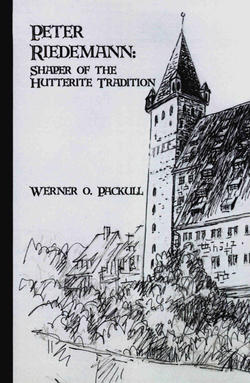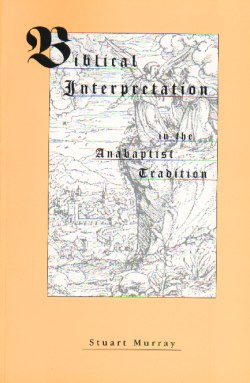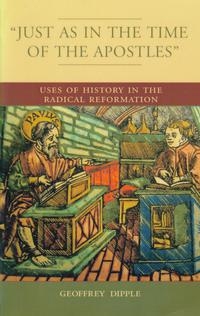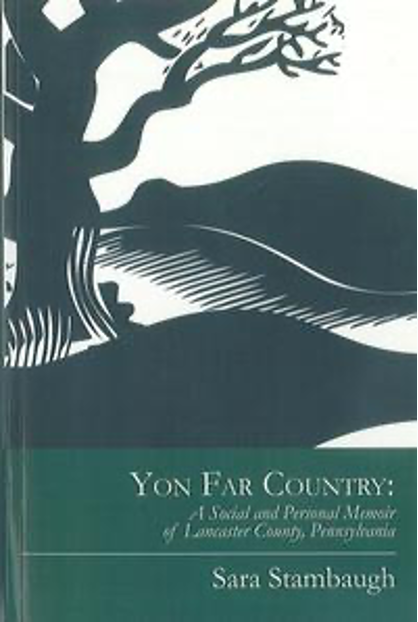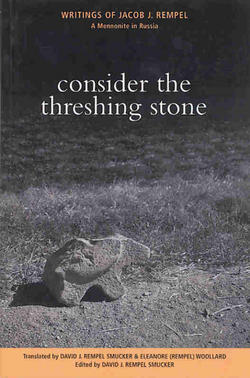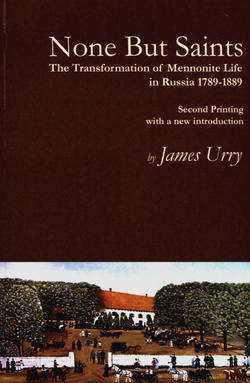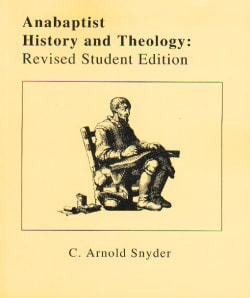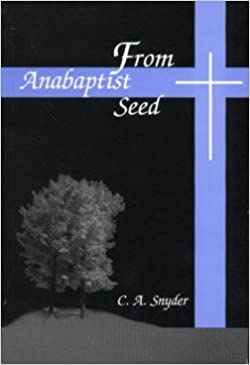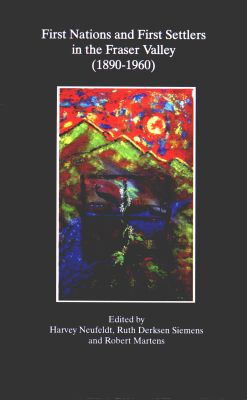Shop Pandora Press Titles

Purpose, Evolution, And the Meaning of Life, by John F. Haught
2004. 130 pp. ISBN: 9781894710558
"'Science versus religion' is a pressing cultural issue affecting the church and its mission, and needs to be addressed by our colleges, seminaries, and mission agencies. The proceedings of the Goshen Conference are a welcome resource."
- Darrin W. Snyder Belousek in the Conrad Grebel Review
In these proceedings of the fourth annual Goshen Conference on Religion and Science Professor Haught, Healey Professor of Theology at Georgetown University presents the elements of his thinking on cosmic purpose and evolution in three lectures. In the discussion sessions participants explored these ideas through questions or comments. Haught’s thinking is, by his own admission, eclectic. He has blended the thoughts of others as a winemaker blends wines to bring out the nuances and sometimes hidden character of the sources. In the lectures the reader encounters Whitehead, Teilhard, Tillich, Augustine and others. Haught points to what he considers the primary messages of Christianity to help our thinking. What emerges points to a purposeful universe that embodies the restlessness that science teaches us is there and the Christian message of hope. To find purpose in the universe is to blend this hope with the details of the emerging universe that science probes.
Haught proposes that such an understanding results in a layered explanation of what we observe. Scientific abstraction seeks simplicity leaving out many of the nuances we know are part of our understanding of daily life. The answer is not to return to the universe of Aristotle. But if we claim that a full understanding lies in any extreme then we miss what we are seeking. Through the lectures and discussions gathered here, the reader can share in the intellectual and imaginative journey of the conference’s participants.
John F. Haught is a Distinguished Research Professor of Theology at Georgetown University.

Elements of Faithful Writing, by Jean Janzen
2004. 49 pp. ISBN: 978-1889239033
Delivered as the Menno Simons lectures at Bethel College in 2003, Jean Janzen's presentations build on the themes of Mud, Water, Fire, Air, and Text, and explore the intersection of nature and mystery. The result is an evocative tapestry of images, textures, words and sounds, woven from elements both historical and contemporary.
"In Elements of Faithful Writing, Janzen seems most at home in the 'mud' - the combination of earth and water that makes the artist’s clay. This is only appropriate for a poet whose most beloved subjects are the body and place. She spends less time on fire and air, returning to earth and a palpable image of text as stone in her final chapter. Here she alludes to a fascination with theology and catechism that has visited her most recent poetic work."
- Ann Hostetler in the Mennonite Quarterly Review

Anabaptist Visions for the New Millennium: A Search for Identity, Edited by Dale Schrag and James Juhnke
2000. 238 pp. ISBN-13: 978-1894710008
A symposium held at Bethel College, June 15-18, 2000.
All twenty-eight presentations are published in this collection.
"Anabaptist Visions contains papers presented at a symposium of the same title held at Bethel College, North Newton, Kansas in June 2000. It includes 28 papers, all but two brief enough to read in a few minutes, from contributors both academic and churchly... The papers are grouped into the categories of Identity, Theology, Engaging the World, New Voices, Worship, Mission and Evangelism, and a Summary... While the introduction suggests that the manifestos were to reflect on assigned topics... one notices overlapping interests across the range of presentations, as well as places where individual visions clash with each other... this collection has an immediacy that, while representing a great deal of serious reflection, characterizes an interactive conversation rather than a scholarly document. Anabaptist Visions should without question be read and discussed well beyond the world of the academy. Fifty years from now when scholars are seeking to understand directions taken by Mennonite people in the United States at the turn of the century, they will need to include this book in their research."
- Mennonite Quarterly Review
"I highly recommend this volume, which will surely spark fresh thinking. I can envision Sunday school classes and small groups spending six to eight sessions making the teaching here relevant to our congregations and to ourselves."
- John A Lapp in the Mennonite Weekly Review (May 10, 2001)
"These engaging pieces were written from a passion for the church. Reading them was in some ways a refresher course for me on what I love about Anabaptism and being Mennonite. It would be fun to use this book in a Sunday school class or small group."
- Arthur Paul Boers in the Canadian Mennonite (July 23, 2001)
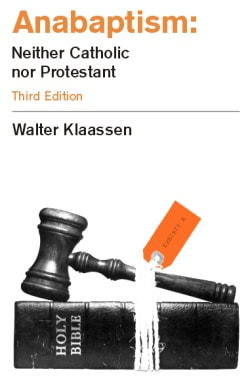
Anabaptism: Neither Catholic Nor Protestant, by Walter Klaassen
2001. 131 pp. 3rd Edition. ISBN: 978-1894710015
Available on Amazon.com and Amazon.ca
Walter Klaassen’s classic book shows how Anabaptists combined elements of Protestantism and Catholicism into a third option that, he argues, has continuing relevance for the present. This is especially true in the areas of lay witness, peace and war, economics, and relationships with the state.
“Anabaptism: Neither Catholic nor Protestant... became a classic summary of the shift away from the understanding of Anabaptism as the true or logical fulfillment of the Protestant Reformation; the lectures conceived of Anabaptism in its own terms as a tertium quid, in contrast to both Catholic Reform and Protestantism, while still recognizing its debt to both traditions.” – Jonathan Seiling in Renaissance and Reformation / Renaissance et Réforme
Walter Klaassen was born at Laird, Saskatchewan in May, 1926. His father and grandfather were ministers in the Eigenheim Mennonite Church. A strong emphasis in the home on the church tradition fixed the author's loyalties and interests. The investigation of that tradition became his major interest in graduate school. Since then he has published numerous books, articles, and chapters in books dealing with Anabaptism. He has done major work in translating sixteenth-century Anabaptist writings into English (three books and counting), a service he continues to perform in his retirement from active teaching. He is a graduate of Rosthern Junior College, McMaster University Divinity College, and Oxford University. He is
professor emeritus of Conrad Grebel College, University of Waterloo.

Healing the Wounds: One Family's Journey Among the Northern Cheyenne, by Malcom and Esther Wenger
2000. 210 pp. ISBN: 978-1894710091
What happens when two newly-wed Mennonite twenty-year-olds are sent as missionaries to the Northern Cheyenne people in Montana? When Malcolm and Esther Wenger arrived in Busby, Montana in 1944, they encountered an "utterly alien" world of beads, braids, feathers and hunters, just a few days' journey from home. The Cheyenne they met were a people whose great grandparents, 68 years earlier, had defeated George A. Custer in the Battle of the Little Bighorn. Only in 1884, after fierce resistance, had the U.S. Government successfully forced the surviving Cheyennes to settle on this reservation. What did the Cheyenne people make of these Mennonites, who would learn to speak their language and tell them of a Savior who had come to earth for the Cheyennes too? This is the story of the Wengers, of the Cheyennes who became their brothers and sisters in Christ, and of those who chose other paths. It is also the story of the five Wenger children, especially of Ann, the daughter who more than anyone else in the family absorbed Cheyenne ways, and felt the pain of the Cheyenne people. She, like the Cheyenne people as a whole, suffered serious wounds. And she, like many Cheyennes today, has overcome the wounds of a painful past and begun to heal. Her poetry and her mother and father's prose tell the stories.
"In 1944 newlyweds Malcolm and Esther Wenger moved to Busby, Montana to serve as missionaries among the Northern Cheyenne. This book is a collection of their reminiscences of two decades of building the church there. It includes stories of sorrow and joy, of lives conquered by addictions and lives changed by the love of Jesus. The stories celebrate the lives of indigenous church leaders, Cheyenne hymn writers, Cheyenne culture and friendships that spanned the cultural gap. But mostly it is the story of one white family's awakening to the destructive forces of white domination over indigenous culture." - Mennonite Quarterly Review
Malcom and Esther Wenger were missionaries who lived on the Northern Cheyenne Reservation in Montana from 16 March 1944 to 17 August 1966.

Biblical Concordance of the Swiss Brethren, 1540, Translated by by Gilbert Fast and Galen Peters. Edited by C. Arnold Snyder. Intorduction by Joe Springer
2001. 296 pp. ISBN: 978-1894710169
It is well-known that first-generation Anabaptists immersed themselves in Scripture - but how did they interpret the Bible? What verses were most important to them? How did the Bible shape their piety and daily life? The Biblical Concordance of the Swiss Brethren, available for the first time in English, goes a long way to providing answers to these questions. In this early printed booklet, the Swiss Brethren organized Old and New Testament passages under topical headings, beginning with the "Fear of God" and ending with "Child Rearing," with over sixty more topical selections in between. Readers with interests in the Bible and Anabaptism will find this book a valuable addition to the literature.
"The Biblical Concordance of the Swiss Brethren is a topical collection of biblical texts, compiled between 1529 and 1540, which may have circulated in manuscript and was eventually published. At least fourteen German editions and one Dutch edition appeared between 1540 and 1710-among Swiss Brethren publications only the Ausbund rivals it in the number of editions published, and bibliographic evidence suggests that the Hutterites made use of it as well. This popularity makes the concordance a valuable resource for studying the history of the Swiss Brethren and other Anabaptist traditions as well. Its topical organization and the simplicity of its structure provide insights not only into how the Swiss Brethren read the Bible, but also how they proselytized and instructed new members. In his general introduction to the volume, Arnold Snyder draws parallels between the topical organization of the concordance and that of Anabaptist prison testimonies to highlight the oral/aural nature of early Swiss Brethren culture and communication. He also argues that the choice of topics in the concordance and the selection of the biblical texts assigned to those topics provide a glimpse into the theological and spiritual heart of Anabaptism."
- Geoffrey Dipple, in the Mennonite Quarterly Review

Religion in a New Key, by M. Darrol Bryant
Religion in a New Key is a creative exploration of a new situation in the religious life of our time - the meeting of men and women of different faiths. Professor Bryant argues that this important religious phenomenon signals a new spiritual possibility for humankind. But we have yet to fully plumb its depths. Bryant explores the implications of interreligious encounter and dialogue for the study of religion and for our life as believing members of different religious communities. Religion in a New Key is relevant to the current tensions between different religious communities. Bryant believes that the experience of dialogue points the way to a new relationship between men and women of different faiths - a way already anticipated by Gandhiji. As Bryant knows from his own experience of dialogue, it leads to a new appreciation of the faith of others and to a recognition of our shared experience of faith across traditions. At the same time, it challenges us to go more deeply into our respective faiths. Dialogue, Bryant argues, can become the new key for the practice and the study of religion. This edition significantly extends the purposes of the original lectures by taking the reader more deeply into the dialogue of religions. The new essays include a further exploration of dialogue with special attention to the Muslim world, a moving account of dialogue as encounter in Buddhist monasteries in Korea and Japan and a vivid account of the Kumbha Mela, the world's largest religious event.

Religion and Science: God, Evolution, and the Soul, by Nancey Murphy
2002. 126 pp. ISBN: 978-1894710206
Proceedings of the 2001 Goshen Conference on Religion and Science Presented here are Nancey Murphy's three public lectures dealing with human identity, the concept of a moral basis for the universe, and evolution. The volume also includes three discussion sessions on physicalism, the embodiment of humans, and prayer related to God's action.
"Murphy provides an insightful, easy to read text that is a most useful contribution to the current debates in the dialogue between religion and science."
-Regent's Reviews, Oxford, England

Mennonite Alternative Service in Russia: The Story of Abram Duck and His Colleagues 1911-17, by Lawrence Klippenstein and Jacob Dick
2002. 177 pp. ISBN: 978-1894710213
"Mennonite Alternative Service in Russia opens with an excellent short essay by Lawrence Klippenstein tracing the history of “Mennonites and Military Service in Russia” from the first Mennonite settlement in 1789 until the end of World War I. When conscription was introduced and Mennonites protested, the Russian government initially offered the opportunity for Mennonites to perform noncombatant medical service, but this was rejected. Instead Mennonite leaders negotiated an arrangement through which Mennonite young men would be placed in forestry camps near Mennonite settlements, with Mennonites managing the camps and covering basic expenses."
- Ted Koontz in the Conrad Grebel Review
"In 1911, at the age of 21, Abram Duck of Schonfeld, Ukraine, was ordered to report to the Azov forestry camp near Mariapol to begin his obligatory term of service. By that year, the forestry service, or Forstei, had been in existence for some 30 years as a Mennonite alternative to military service in Russia. It had played an important role in Mennonite life, both for the communities as a whole in their relationship to the Russian government and the society around them and for the thousands of young Mennonite men whose lives had been touched by the experience. ... Combining a general overview with more individual histories,(Lawrence) Klippenstein's and (Jacob) Dick's book makes an important contribution to our understanding of the place of alternative service in the lives of the Russian Mennonites in the late nineteenth and early twentieth centuries and perhaps gives us a new appreciation of the legacy of that service for the generations that followed."
-Ron Peters, in the Saskatchewan Mennonite Historian

Mennonite Tent Revivals: Howard Hammer and Myron Augsburger, 1952-1962, by James O. Lehman.
2002. 347 pp. ISBN: 978-1894710220
“In the 1950s, Mennonite communities in Ontario and western Canada experienced successive summer tent campaigns. Mennonite evangelists from the eastern United States set up tents and held revival meetings from two weeks up to a month in one place. In western Canada, some people viewed these tent campaigns as positive, others as negative. Canadians did not get a sense of the context out of which these tent campaigns came, how recently they had begun, nor what they represented. Canadian readers will find this book by James O. Lehman helpful to understand these campaigns better. Lehman, director of libraries at Eastern Mennonite University and author of a number of local history books, presents a well-documented study of the beginnings of Mennonite tent revivals in the eastern United States. In the process, he places the Canadian tent campaigns into context. He shows why they began, who promoted them, what they were intended to do and why, when their appeal began to fade, they were brought to western Canada.”
-John J. Friesen in the Journal of Mennonite Studies
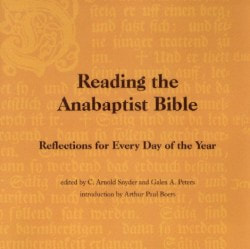
Reading the Anabaptist Bible: Reflections for Every Day of the Year, Edited by C. Arnold Snyder
2002. 415 pages. ISBN-13: 978-1894710251
Out of website stock. Available on Amazon.com and Amazon.ca
Reading the Anabaptist Bible is a unique day book, with one page of meditative readings set for each day of the year. Every daily reading is composed of two primary elements: a Bible passage for the day, and an Anabaptist testimony reflecting on the biblical words. An Introduction by Arthur Paul Boers provides practical suggestions for the meditative reading of this collection.
Praise for Reading the Anabaptist Bible
“How does one use such a resource? Though valuable to scholars, the book is even more valuable to the church in offering a wide view of what mattered most to our ancestors in the faith. Their familiarity with scripture and commitment to disciplined Christian living challenge the church to faithfulness. Just as our ancestors kept these verses in their hearts, we too may be inspired to meditate on scripture and let it work its transforming way in our lives.”
- Marlene Kropf, in the Mennonite Quarterly Review
"Reading the Anabaptist Bible is a unique publication within the areas of Anabaptist history and theology, mainly because it serves as a daily guide for the spiritual disciplines. The book contains 365 readings, each containing three elements: a Bible passage, a brief explanatory text and an Anabaptist testimony reflecting on the biblical text or teaching."
- Mennonite Life
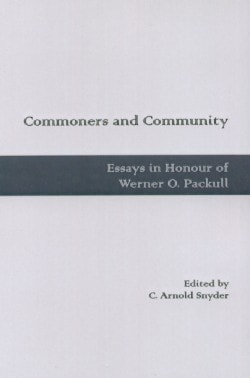
Commoners and Community: Essays in Honor of Werner O. Packull, Edited by C. Arnold Snyder
2002. 323 pp. ISBN: 978-1894710275
In a career spanning more than thirty years, Werner O. Packull has established himself as one of the premier historians of early modern Europe, specializing in the area of Radical Reformation studies. He is recognized as the world's expert in the history of sixteenth-century Anabaptist communities in Moravia. This volume contains original studies by thirteen leading scholars, published in honor of professor Werner O. Packull.
"To honor Werner Packull, with whom many associate the “polygenetic beginnings” thesis, now thirty years old, and more recently phrases like “between paradigms” and “demise of a normative vision,” one should expect a Festschrift with the latest revisionary interpretation of sixteenth-century Anabaptism. The authors (Packull’s colleagues and students) and the editor have delivered, and they have produced a richly rewarding book."
- Walter Sawatsky in The Conrad Grebel Review 23, no. 2 (Spring 2005)
Pandora Press Titles







